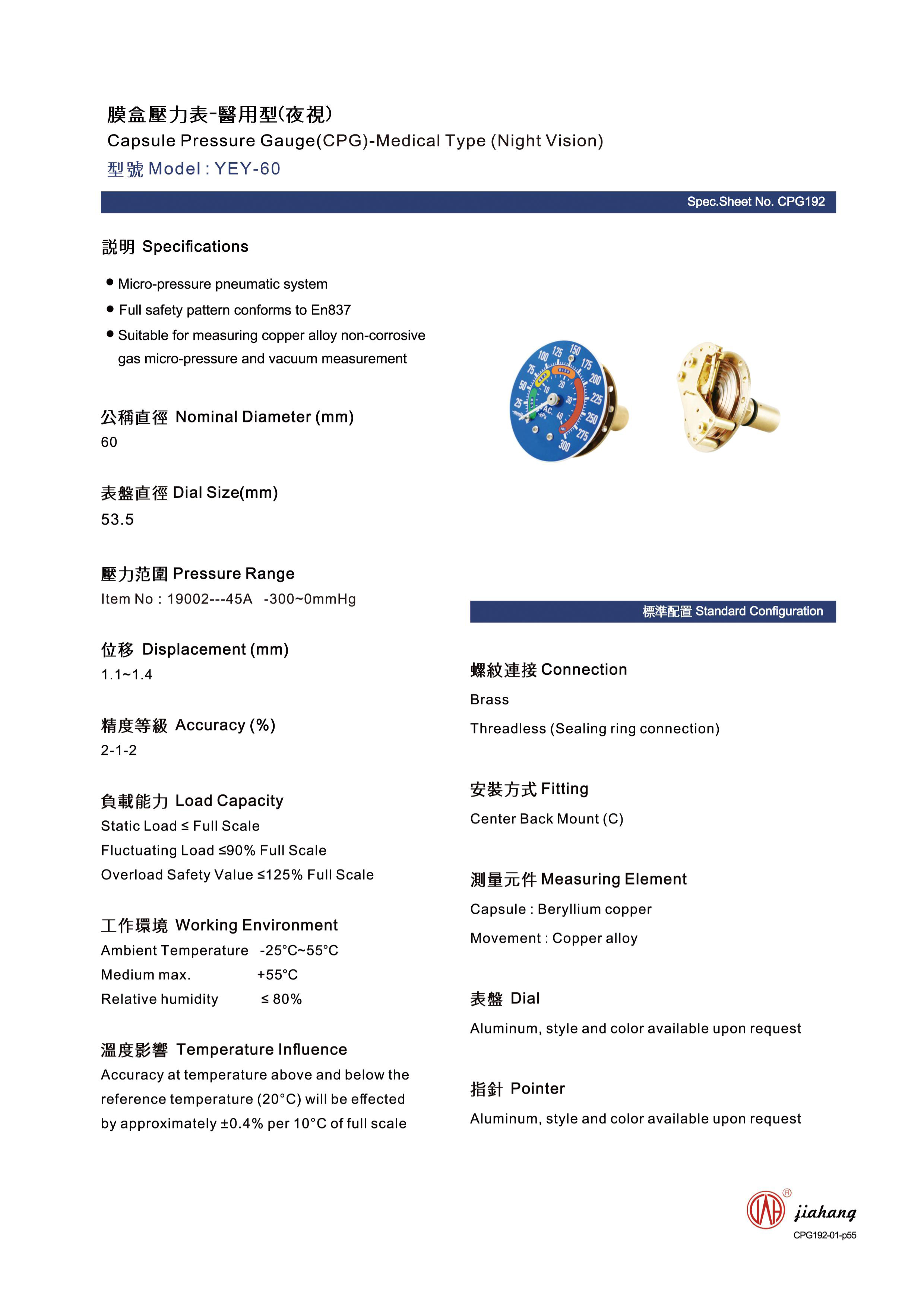
Oct . 22, 2024 01:54 Back to list
bourdon differential pressure gauge product
Understanding Bourdon Differential Pressure Gauges A Comprehensive Overview
Bourdon differential pressure gauges are essential instruments in various industrial applications, providing accurate measurements of pressure differences between two points. These gauges employ the Bourdon tube principle, named after the French engineer Eugène Bourdon, who invented the device in the mid-19th century. Their robustness and reliability make them popular in sectors such as oil and gas, chemical processing, and HVAC systems, where precise pressure monitoring is critical.
At the core of the Bourdon differential pressure gauge is its unique design featuring a curved tube, which is closed at one end. As fluid pressure enters the tube, it causes the curve to straighten, effectively translating pressure changes into a measurable movement. This movement is then transmitted to a pointer on a calibrated dial, providing a clear reading of the pressure differential. The gauge can measure both positive and negative pressure, making it versatile for various applications.
One of the primary advantages of Bourdon differential pressure gauges is their simplicity and durability. Unlike electronic pressure sensors, which can be susceptible to environmental factors such as temperature fluctuations and electromagnetic interference, Bourdon gauges operate mechanically. This makes them ideal for harsh environments where electronic devices might fail. Additionally, they require minimal maintenance, which reduces operational costs over time.
bourdon differential pressure gauge product

Bourdon gauges are available in various configurations, offering options for different pressure ranges, sizes, and materials. For instance, stainless steel models are preferred in corrosive environments, while brass versions may be suitable for less aggressive applications. The choice of configuration can significantly impact the gauge's performance and longevity, so selecting the right type for specific conditions is crucial.
Proper installation and calibration are vital to ensure accurate readings from Bourdon differential pressure gauges. It's essential to position the gauge at a point where the pressure difference is representative of system conditions. Regular calibration and maintenance checks will help identify any wear or potential failure, ensuring the instrument continues to function accurately over time.
In conclusion, Bourdon differential pressure gauges are invaluable tools that offer precise and reliable pressure measurements across a wide array of industrial applications. Their mechanical operation, durability, and low maintenance requirements make them an excellent choice for many engineering and process control scenarios. By understanding their design and proper usage, industries can effectively monitor pressure differentials, enhancing operational efficiency and safety.
-
High-Precision 5 Valve Manifold Differential Pressure Gauge Suppliers
NewsApr.29,2025
-
High-Precision Diaphragm Vacuum Pressure Gauges Manufacturers & Quotes
NewsApr.29,2025
-
Omega Differential Pressure Gauges High Accuracy & Durability
NewsApr.28,2025
-
Low Pressure Differential Pressure Gauges Precision Solutions & Quotes
NewsApr.28,2025
-
Digital Diaphragm Pressure Gaauge Precision Measurement & OEM Quotes
NewsApr.28,2025
-
Differential Pressure Gauge China Price High-Accuracy & Best Quotes
NewsApr.28,2025
